2016 Mazda CX-9: First Drive

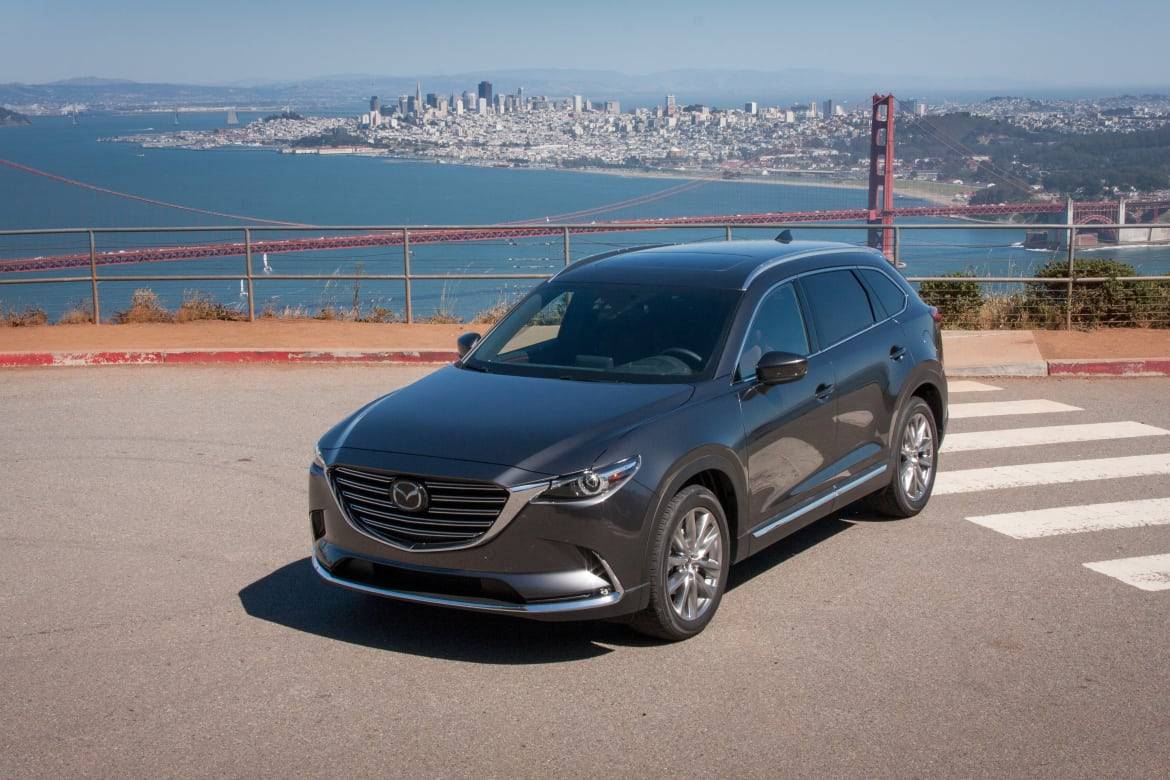
CARS.COM — Mazda has redesigned the largest vehicle in its lineup for the 2016 model year, the CX-9 crossover SUV, which seats seven in three rows.
We’ve covered a lot of information about the CX-9 already, including pricing and its fuel economy improvements. The last piece of the puzzle was to take it out on the open road to see how those changes translate.
Related: Research the 2016 Mazda CX-9
I spent the day in a CX-9 Signature model, the new top trim level. It comes standard with everything that Mazda offers for a CX-9, and it is priced at $44,915 (including a $900 destination fee). The base CX-9 Sport starts at $32,420 with front-wheel drive. All four trim levels come with front- or all-wheel drive and a six-speed automatic transmission except the Signature, on which all-wheel drive is standard.
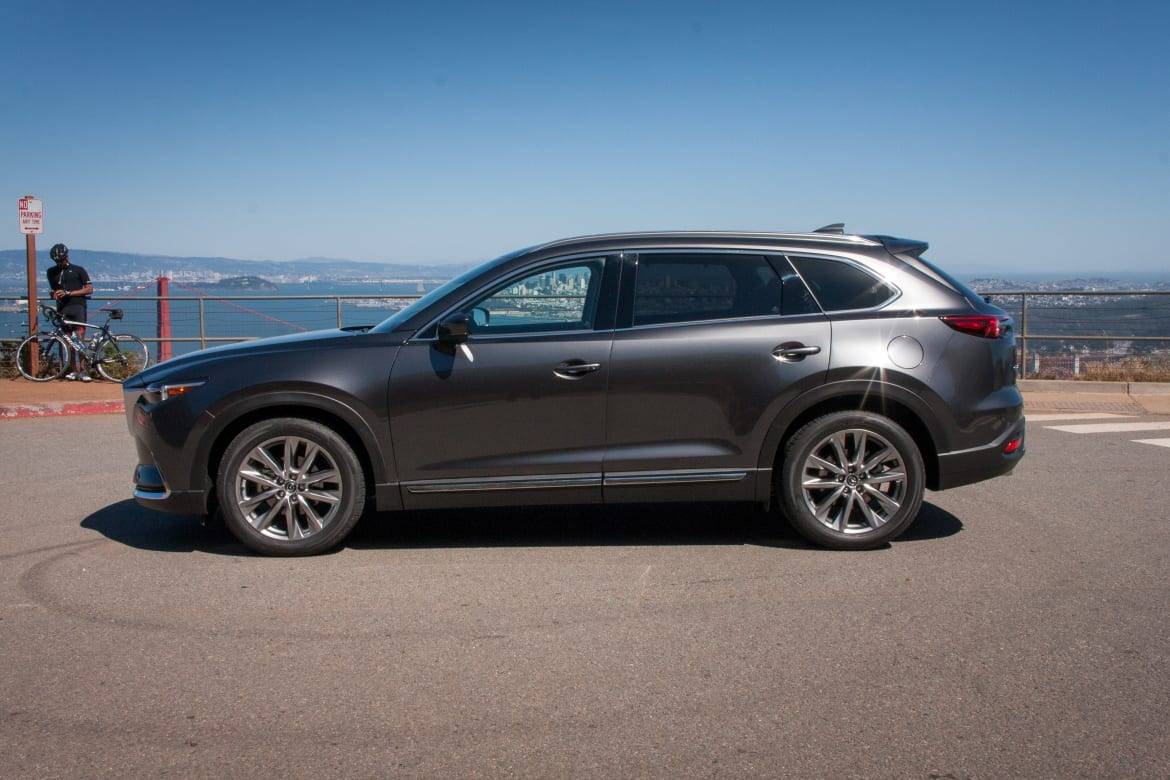
Exterior Updates
The exterior was totally revamped. The CX-9 is the final model in Mazda’s lineup to receive the “kodo” design language and it is also (to my eyes) the best execution of the concept. The grille shape benefits from a larger treatment and, viewed from the side, the grille actually leans forward aggressively, giving the nose added definition. LED headlights and taillights are new as well and are standard across all trim levels.
I thought that the CX-9 was pretty good-looking, but I wasn’t prepared for the stares and inquiries it drew at several of our stops. This doesn’t always happen in vehicles we test, especially ones like this in the more, shall we say… family-oriented classes.
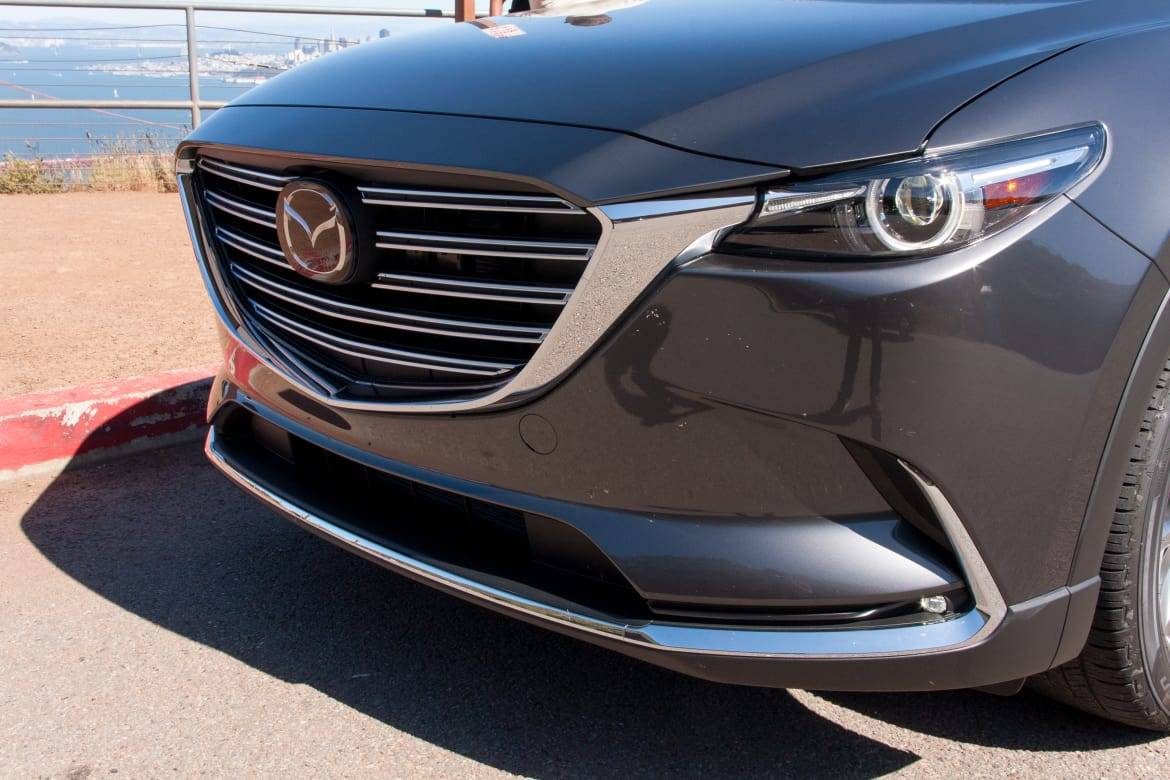
How It Drives
Mazda downsized the engine for 2016, replacing the V-6 with a brand-new, turbocharged 2.5-liter four-cylinder engine that makes 250 horsepower on 93-octane gas and 227 horsepower on 87-octane fuel, as well as 310 pounds-feet of torque. The CX-9 that I drove was filled with 91-octane gas, the highest you can get in California.
At many of these events, the roads sometimes don’t match the vehicle we are testing — for example, putting a pickup truck through a curvy canyon, or a sports car only on the freeway. I was afraid that this was the case when I saw Mazda’s selected drive route for the CX-9, because it put us through some very twisty sections of road north of San Francisco’s Golden Gate Bridge on Highway 1 that can quickly expose a vehicle if its drivability is not up to par.
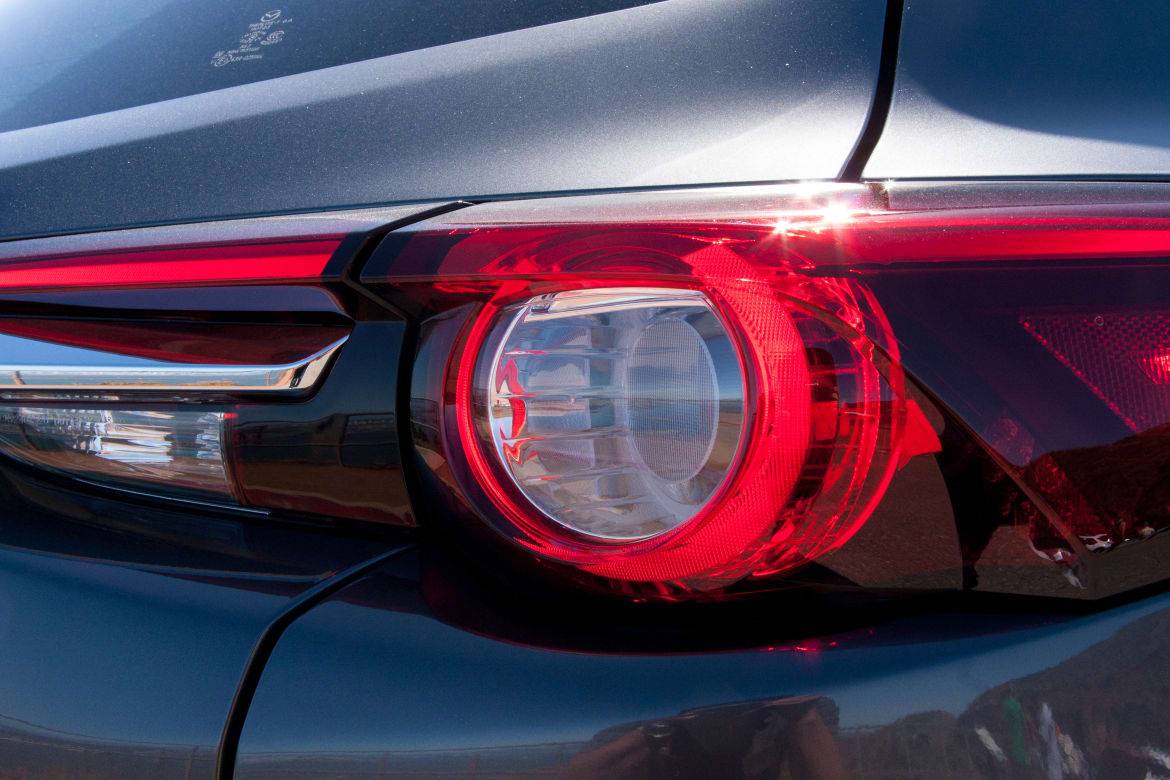
My worrying was for naught. The previous generation of the CX-9 was my favorite member of this class to drive, and the new one is somehow even sharper. Mazda consistently does “driving feel” better than pretty much any other automaker, and the CX-9 is no exception. There’s just enough body roll in the corners to let you feel what the crossover is doing beneath you without feeling tippy, and the steering offered ample feedback for confidence with just the right amount of weight. It’s steering that feels sporty and responsive, without requiring Popeye muscles to make a turn.
The CX-9 drives like a much smaller vehicle. At certain points, I forgot I was driving a seven-seater, as I flicked it through quick changes of direction with a sheepish grin. And the downsized engine still fits the CX-9. It’s not as quick as some of the other models in this class, such as the Ford Explorer with its optional 3.5-liter EcoBoost V-6, but it doesn’t feel underpowered, and the six-speed automatic does a good job finding the right gear for the task at hand.
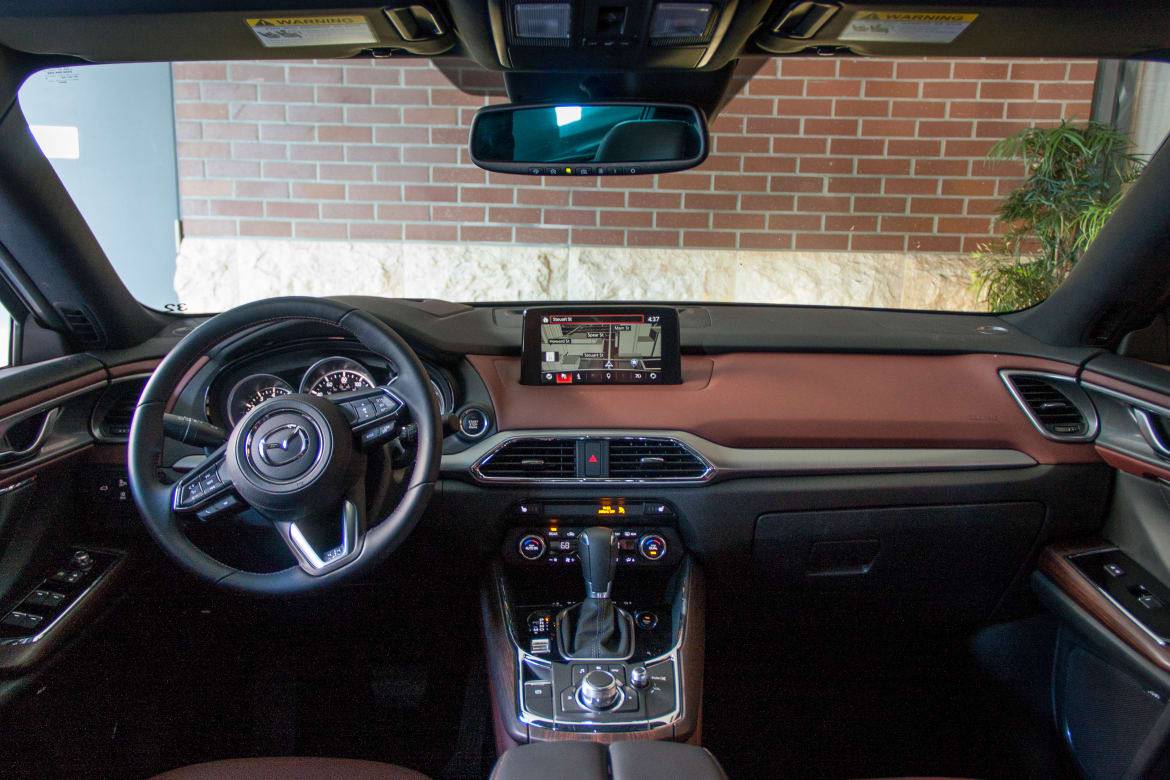
Interior
Though the CX-9’s overall dimensions remain roughly the same (it’s both longer and wider by about an inch), the new design does cut down a bit on cargo and passenger room. The first- and second-row seats are excellent, with comfortable contouring and high-quality materials. In the second row, I found there to be ample legroom and headroom for long trips. That’s not the case, however, in the third row, which loses more than 2 inches of legroom and is very tight for adult-size humans. Kids will still fit back there OK, but as a 5-foot-11-inch adult, I found sitting with my head planted firmly in the headliner was not ideal.
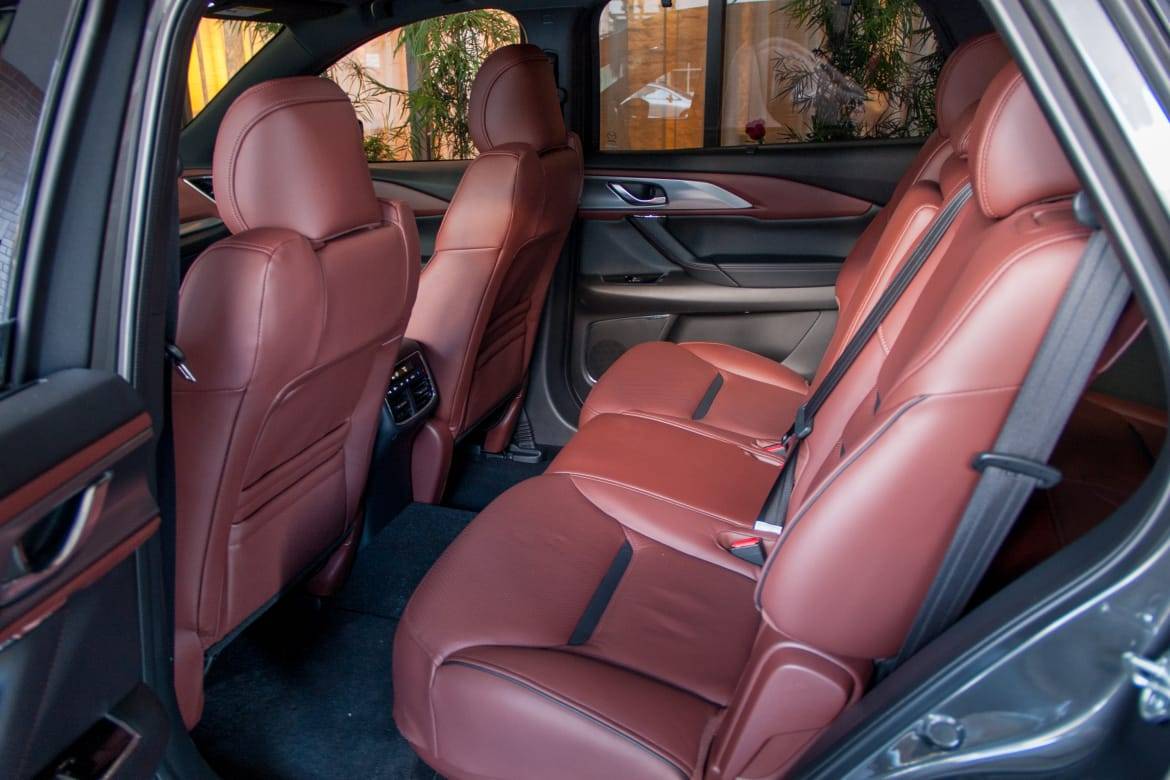
The CX-9 seats seven in all configurations, lacking some of the optional seating/cargo flexibility found on competitors such as the Honda Pilot and Ford Explorer, which offer second-row captain’s chairs. However, the passenger-side seat in the second row does have a rare feature: It can fold and slide forward to allow access to the third row even with a forward-facing car seat installed, useful for parents with young children.
On the plus side, there now is a thicker floor pan and 53 pounds of additional insulation between the floor and carpet. This gives the CX-9 a very quiet interior, with good isolation from both wind and road noise.
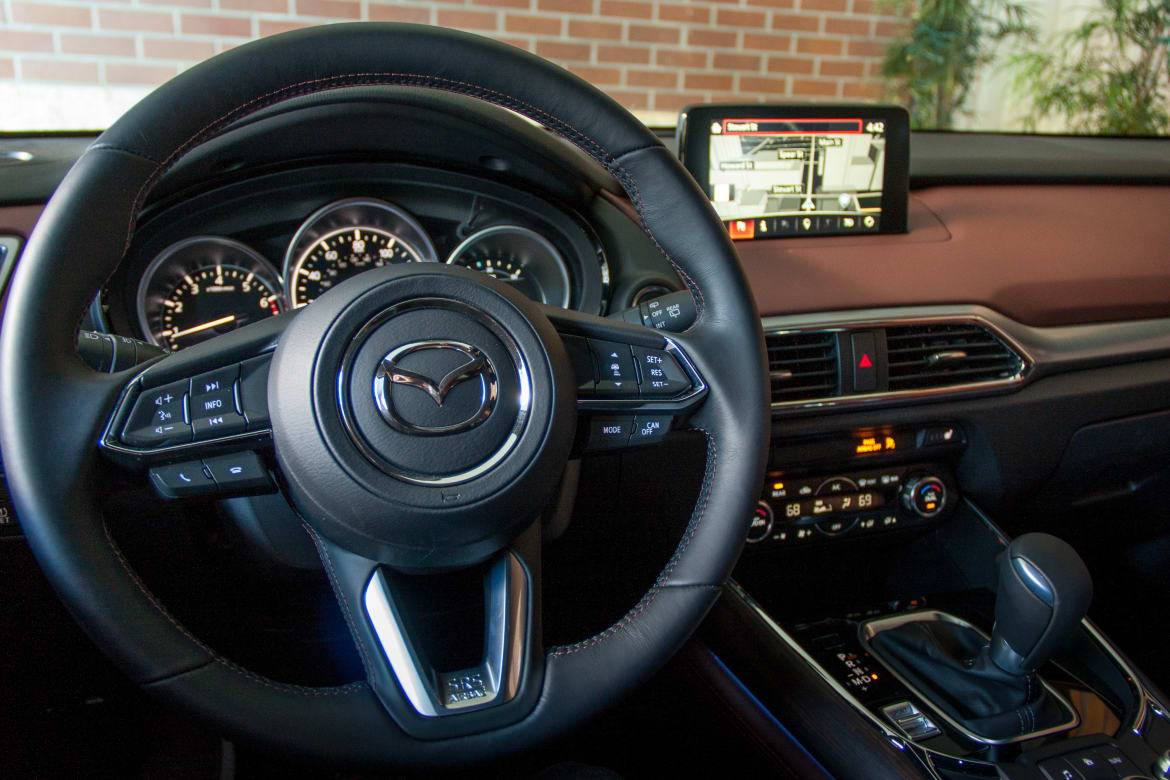
Tech Crunch
Incorporated into the CX-9 this go-round is the Mazda Connect infotainment system, controlled by a rotary knob and buttons found in the center console between the front seats. When the system appeared a few years ago, it was a big improvement over Mazda’s previous offerings but today it doesn’t hold up to the latest systems from other manufacturers. Doing simple tasks such as changing the radio station takes multiple button presses, and I had to remove my eyes from the road to do it. The available 8-inch screen (7 inches standard) can function as a touch-screen, but, out of safety concern, only does so when the car is stopped.
This would be less of an issue if Android Auto and Apple CarPlay were present, but they are conspicuously absent and their presence is missed. The smartphone integration is not included on the new CX-9 now and, when asked, Mazda representatives would not say if the system could ever be upgraded after purchase.
On the plus side, Mazda has incorporated two new USB charging ports into the fold-down armrest of the second row’s middle seat, in addition to the two found up front. They charge at 2.1 amps (vs. 1.0 amp for the front ports), so they can juice up larger devices such as tablets as well.
Safety
The CX-9 now is up to par on safety technology, having adding several new available features including forward collision warning with automatic emergency braking, adaptive cruise control and automatic high beams.
Also new are available head-up display (HUD) and lane-departure warning.
The new HUD projects much more information onto the windshield than the old system, including adaptive cruise control information, brake warnings, directions from the navigation, and a tachometer. One feature that I haven’t seen before but really liked was the addition of blind spot warnings to the HUD, supplementing the more common light indicators in each side mirror. There is one drawback to the head-up display, however, which the CX-9 system shares with most others — you can’t really see the display with polarized sunglasses on.
Also newly available for 2016 is lane-keep assist, which can nudge you back into your lane if you ignore one of the customized alerts (audio or steering wheel vibration). It’s one of the subtlest lane-keep systems I’ve encountered; it gently guides you back into the lane rather than abruptly steering like some systems do. The whole experience feels more natural than in other vehicles I’ve tested. The same thing could be said for the adaptive cruise control; they both actually made the CX-9 easier to drive for long stretches, with no jerkiness or sudden acceleration/slowing during my drive.
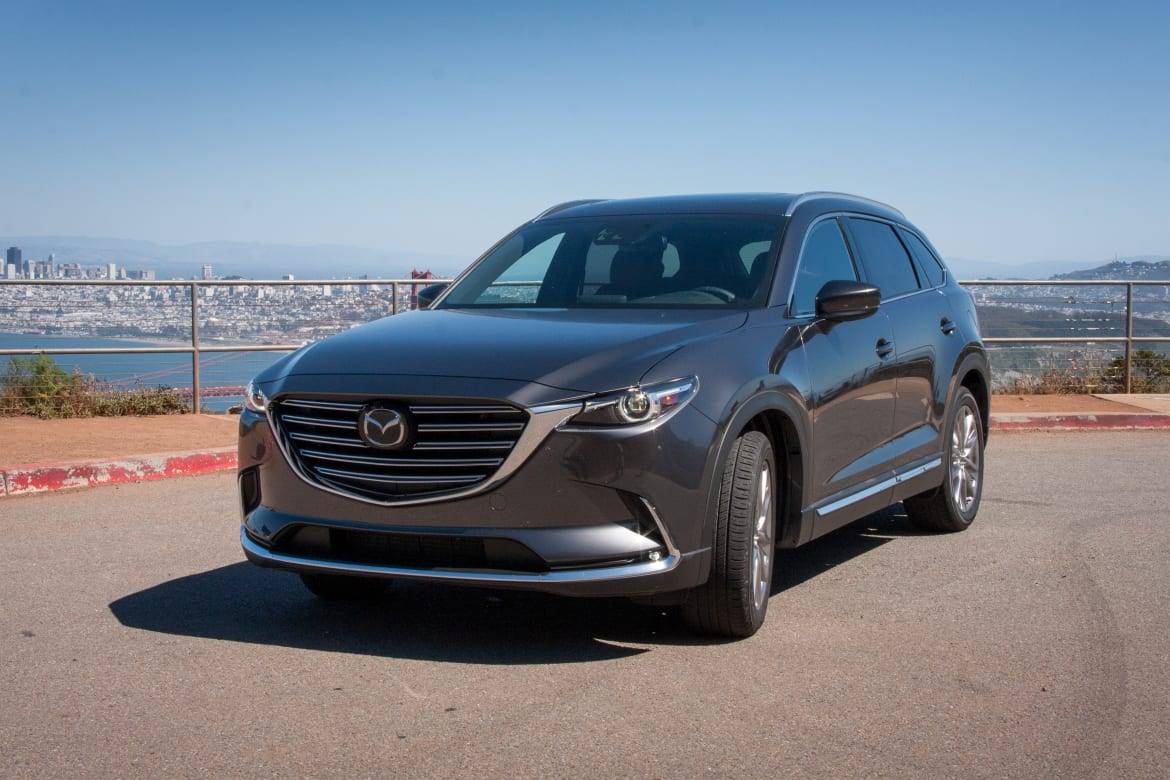
Value
The CX-9 is by a large margin, to me, the best-driving vehicle in this segment. Dynamically it blows the others away and it’s also the sharpest-looking three-row SUV to boot. That being said, there are a few missing components when it comes to seating and the feature set.
The CX-9’s principal competition — the Honda Pilot, Ford Explorer and Toyota Highlander — all offer second-row captain’s chairs for added flexibility and greater passenger comfort. Each of them also offers features such as rear-seat entertainment systems and panoramic moonroofs. The CX-9 does not.
Outfitting each of those three competitors with similar features (all-wheel drive, similar safety technology and navigation) to the CX-9 gives them prices relatively close to the CX-9 Signature’s $44,915, so there is still good value to be had here. But if car shoppers are looking for those previously mentioned features or a more functional third row, they’ll have to turn elsewhere.
Ultimately the CX-9 suffers from the same problem that many other Mazdas do — great on the road, but with a few quirks that might dissuade some consumers. It’s the one I’d have, but I’m also a 30-year-old man with no kids.
The 2016 CX-9 will arrive at dealerships this June.
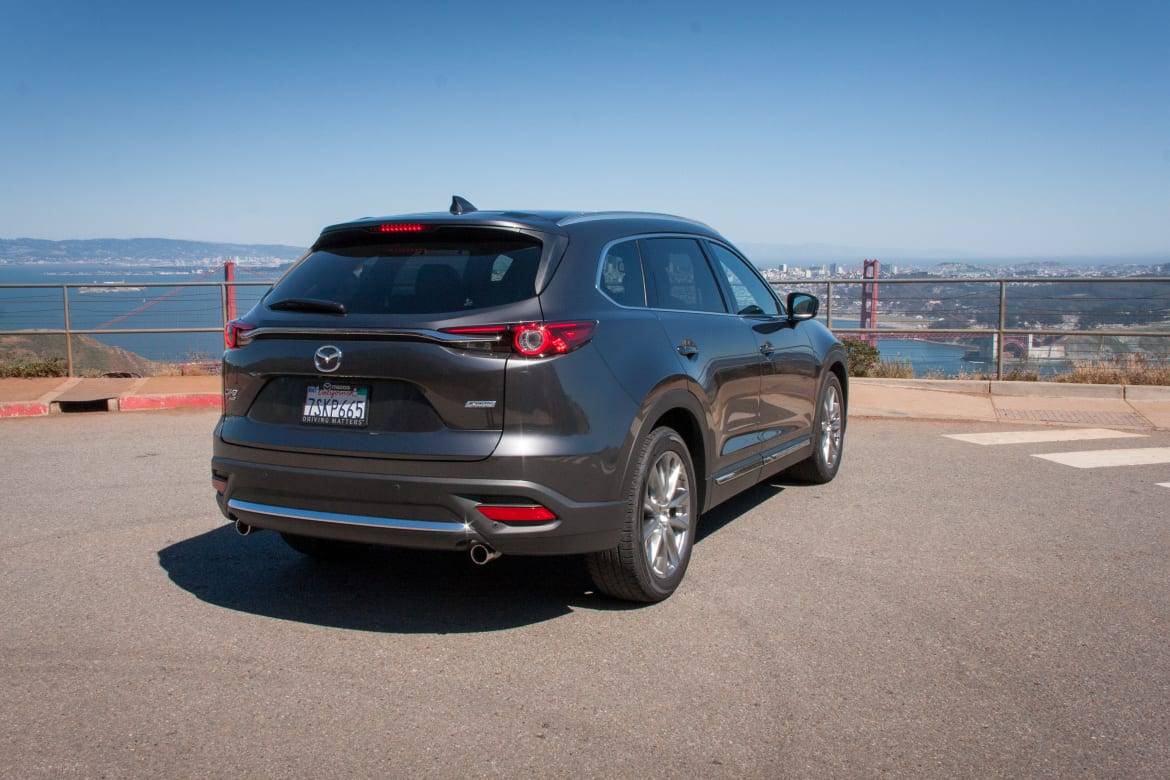

Former L.A. Bureau Chief Brian Wong is a California native with a soft spot for convertibles and free parking.
Featured stories




